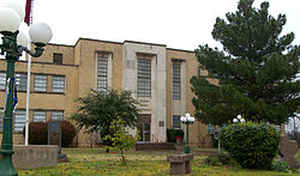Texas Counties
Texas is divided into two hundred and fifty-four counties, more than any other state. Texas was originally divided into municipalities, a unit of local government under Spanish and Mexican rule. When the Republic of Texas gained its independence in 1836, there were 23 municipalities, which became the original Texas counties. Many of these would later be divided into new counties. The most recent county to be created was Kenedy County in 1921. The most recent county to be organized was Loving County in 1931Coleman County, Texas
Coleman County Education, Geography, and History

Coleman County is a county located in the state of Texas. Based on the 2010 census, its population was 8,895. The county seat is Coleman. The county was founded in 1858 and organized in 1864. It is named for Robert M. Coleman, a signer of the Texas Declaration of Independence and soldier at the Battle of San Jacinto.
Etymology - Origin of Coleman County Name
Robert M. Coleman, a signer of the Texas Declaration of Independence and soldier at the Battle of San Jacinto
Demographics:
County QuickFacts: CensusBureau Quick Facts
Coleman County History
In early Texas had Apache, Comanche, Kiowa camps and mountain lookouts. White settlement began at Camp Colorado, US 2nd Cavalry Post on Jim Ned Creek, 1857. County was created Feb. 1, 1858. Named for Robert M. Coleman (1799-1837), a signer of Texas Declaration of Independence and a hero of the Battle of San Jacinto. To south part of county, 1862, came John Chisum, to raise cattle to be furnished to Confederate troops fighting Civil War. County was organized Oct. 6, 1864. Courts first met at Camp Colorado. Coleman was approved as county seat April 28, 1876.
Handbook of Texas Online
Coleman County was formed in 1858 from parts of Brown and Travis counties. Organization began in 1862 and was
completed in 1864. The county was named for Robert M. Coleman, a signer of the
Texas Declaration of Independence and an aide to General Houston at San Jacinto.
After organization was completed settlers began moving into the county. Some of the more notable were Rich Coffey,
William Day, Mabel Doss Day Lea, and John Chisum. Chisum established a store at
Trickham and maintained a ranch headquarters on Home Creek in the southern part of the county. Coffey established
himself on a ranch between the site of present Leaday and Voss about 1866. He also served as a county commissioner,
participated in the first county grand jury, and was part of a commission to select a new county seat. William Day
ran a ranch in the southwestern corner of the county. His holdings sprawled from Grape Creek in the north, eastward
to Elm Creek and then southward to the Colorado River. He died in June 1881 from injuries received in a cattle
stampede. His wife, Mabel, whom he had married in 1879, continued to run the ranch for a time after his death.
Because of debts she sold the ranch to homesteaders in 1904. More at
Rusty Tate, "COLEMAN COUNTY," Handbook of Texas Online (http://www.tshaonline.org/handbook/online/articles/hcc15),
accessed January 23, 2016. Uploaded on June 12, 2010. Published by the Texas State Historical Association.
Geography: Land and Water
As reported by the Census Bureau, the county has a total area of 1,281 square miles (3,319 km2), of which,
1,260 square miles (3,264 km2) of it is land and 21 square miles (55 km2) of it (1.66%) is water.
Neighboring Counties
Bordering counties are as follows:
- Callahan County (north)
- Brown County (east)
- McCulloch County (south)
- Concho County (southwest)
- Runnels County (west)
- Taylor County (northwest)
Education
The following school districts serve Coleman County:
Bangs ISD (mostly in Brown County)
Coleman ISD
Cross Plains ISD (mostly in Callahan County; small portions in Eastland, Brown counties)
Panther Creek Consolidated ISD (small portion in Runnels County)
Santa Anna ISD







